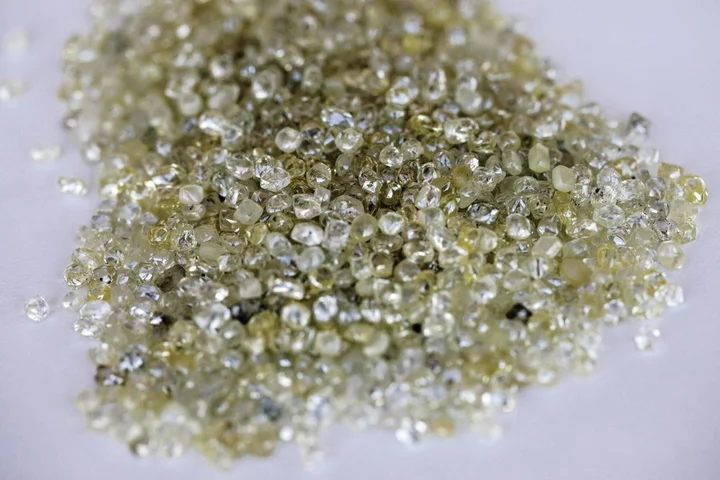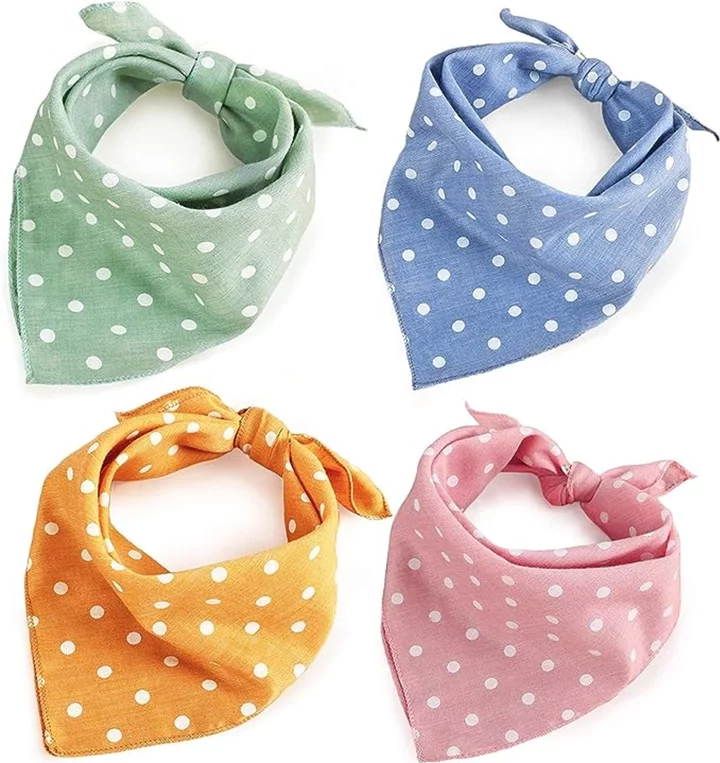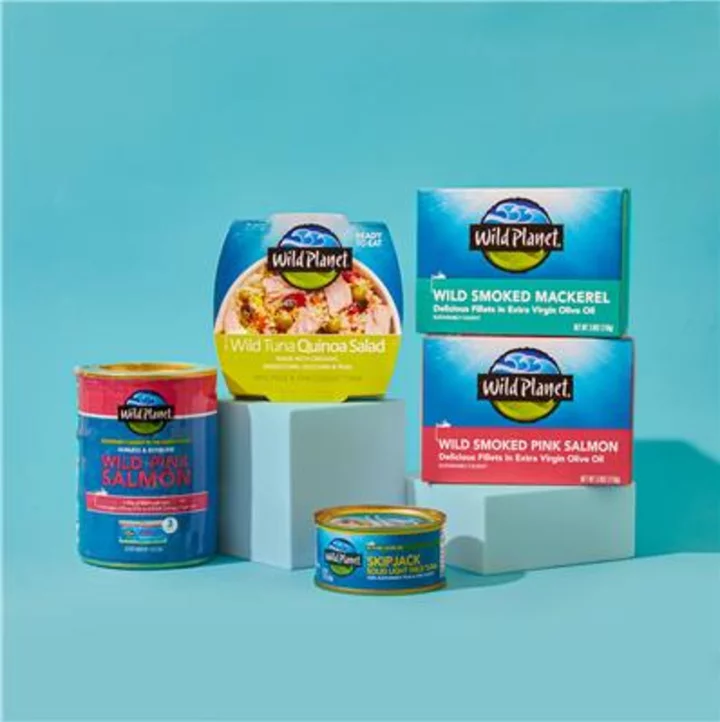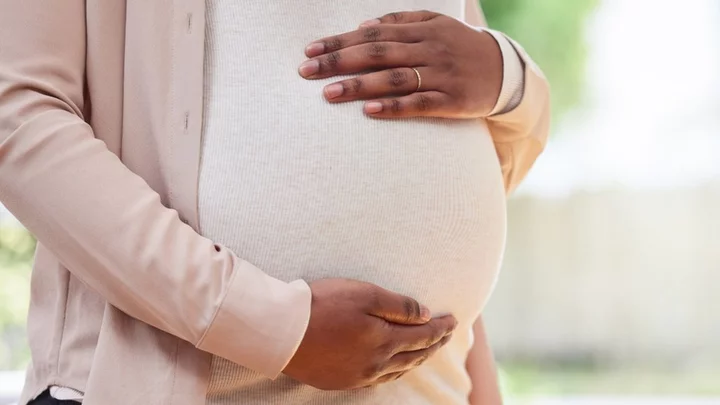
Chef Marcus Samuelsson Invests in Aleph Farms, Plans to Serve Aleph Cuts Cultivated Steaks
REHOVOT, Israel--(BUSINESS WIRE)--Jun 7, 2023--
2023-06-07 21:20

Man diagnosed with brain tumour after putting symptoms down to drinking coffee
A man diagnosed with a brain tumour after seizures he blamed on “drinking too much coffee” has made a full recovery – and is cycling 85 miles in May and 141 miles in June to celebrate the end of his chemotherapy treatment. Steve Biggin, 51, a sales assistant at Morrisons who lives in Sheffield with his wife, Anna, 47, and has three children, Lauren, 28, Mya, 24, and Evan, 21, began having “out of body experiences” at work in September 2021. He said they felt like “looking through someone else’s eyes” but later found out he had been having seizures. After two months of regular seizures, Steve had a severe thunderclap headache and after going to A&E was dealt the “huge shock” of a brain tumour diagnosis. He cycled every single day after he got the diagnosis, which he thinks made him “even stronger” and helped him make a good recovery after having the tumour removed successfully. He is now planning to cycle through the Scottish highlands on May 14 and from Morecambe to Scarborough in June to “prove” he can do it. “Cycling has helped me through the hardest of times and I think it helped me recover from the operation, emotionally and physically, and I want to prove to myself that after all this, I can complete the race,” Steve said. “I think when I cross the finish line, I’ll just have a big smile on my face. I’ll honestly be quite proud of myself.” Steve said the seizures did not leave him “fitting on the floor or anything like that” – though he did feel disconnected from the world. He said: “I couldn’t explain how I felt. They were almost like out of body experiences looking through someone else’s eyes. “I could still communicate and co-ordinate, it just felt so weird. It would happen at work when I was at the checkouts. “I just put it down as drinking too much coffee so I didn’t really think much of it.” Steve continued having seizures up to once a week until, in November 2021, he had a severe and sudden thunderclap headache at home that, little did he know, was another warning sign of cancer. He said: “The headache lasted for about seven minutes. I was being a typical bloke and played it down a bit. “I was sat in the living room with my family and told them and Maya, my daughter, said I needed to go to A&E.” To put his family’s mind at rest, Steve went to hospital, where doctors insisted he should have MRI and CT scans and kept him in the hospital for monitoring. After being in Sheffield’s Northern General Hospital for three days, on November 17 everything seemed normal; his wife went to visit him and they were both under the impression there was nothing serious going on. But then, as soon as Anna left, a doctor went to Steve’s bedside with devastating news. “The doctor came over and threw the curtains around. He said he had some bad news for me and I have a tumour,” he said. It was a huge shock to the system but I’m a very optimistic person Steve Biggin “I asked if it was cancerous and the doctor said it was. “It was a huge shock to the system but I’m a very optimistic person; I don’t know if I took it on board fully. “I remember there was a gentleman opposite me in the ward and he asked if he could pray for me, which I thought was beautiful, but I was definitely in shock.” Steve decided to tell his family his diagnosis the same evening but waited for Anna to get home because he did not want to tell her the news while she was driving, in fear she might crash. He said: “I rang Anna and she was having a glass of wine with the kids. They were all laughing and joking in the background so I decided to tell them the following day. “I didn’t have the heart to tell them when they were so happy. “It was a very lonely, sad night for me. “I told them over the phone and they came to see me the next day. They had tears in their eyes. “I was feeling positive when I saw them, though. “I was determined to beat it.” Steve was discharged from the hospital on November 19 and told Tesco he wanted to continue because he wanted to keep life as normal as possible. A few weeks later, he had a meeting with a consultant, who revealed his tumour was at stage two. Steve felt he was coping well and continued to be optimistic until he had a week off work to celebrate his wife’s birthday. He said: “We woke up on Anna’s birthday and we just both cried, not knowing how serious it was and what I was gonna lose. “I think that was the worst part. “But then, after that day, we got into the roll of things and got a date for the operation.” After Steve had a date for the surgery, he wanted to get as fit as possible and cycled every day, which he said “got (him) through his mental struggles”. On January 17 2022, Steve successfully had the tumour surgically removed. Steve said: “It was mixed emotions, I suppose. I was worried it was going to come back but I was overjoyed because they got rid of 99.9% of the tumour.” I’m strong-willed anyway but cycling made me even stronger Steve Biggin Throughout Steve’s recovery, he continued to cycle and stay as positive as possible. He said: “I think my fitness played a massive part in the recovery and, seven weeks after the operation, I did 35 miles on the bike on the road with my friend. “I’m strong-willed anyway but cycling made me even stronger.” One week later, Steve began having radiotherapy for six weeks, five times a week, followed by chemotherapy, in tablet form, for five days in a row, with 23 days off, for 12 months. He said: “I just got into a routine with it and I was just thankful to be getting over it.” Steve’s chemotherapy ended at the end of March 2023. He said: “I was just massively relieved and so was my family. “My tumour took a bigger toll on them than it did me and Anna, my wife, was my absolute rock.” To celebrate the end of chemotherapy, Steve is taking part in Etape Caledonia on May 14 and hopes to complete it in just five-and-a-half hours. “I’m so excited for it. It’ll be great to celebrate the end of treatment with something I truly love doing – and cycling really got me through the tough times,” he said. Steve is also planning on cycling 141 miles coast to coast, from Morecambe to Scarborough, over three days at the end of June. Looking back on the last few years, Steve said he thinks the experience has changed his perspective on life, saying: “I carry a little bit on my shoulder thinking it could come back. “But, hey, I’m 51, have a fantastic family… I’ve had a fantastic life so far. “Having cancer has brought a more meaningful touch to my life, for sure.” To donate to Steve’s fundraiser, for The Brain Tumour Charity, visit www.justgiving.com/page/stephen-biggin-1679513324479. Read More Four ‘red flag’ bowel cancer symptoms that can show two years before diagnosis Couple go viral after sharing ‘uncomfortable’ age gap romance: ‘That’s some Leo DiCaprio stuff’ Tom Holland reveals he’s been sober for over a year
2023-05-11 15:48

Apple previews new accessibility tools, including Live Speech and Assistive Access
Apple is previewing a number of new accessibility tools and features ahead of its Worldwide
2023-05-16 21:15

Cost of Living Crisis Gets Worse for 80% of British Families
Eight in 10 British households suffered a drop in their disposable incomes last month as rising living costs
2023-06-26 18:24

De Beers Diamond Sales Slump
De Beers sold the least diamonds since halting sales altogether during the height of the global pandemic, as
2023-11-08 17:56

Apple WWDC 2023 preview: Everything you need to know
Folks, prepare for an epic WWDC. Apple's Worldwide Developers Conference, which kicks off on June
2023-05-19 22:45

Thousands stuck in deep mud at Burning Man festival
Tens of thousands of drenched festivalgoers were stranded Sunday in deep, sticky mud in the Nevada desert after torrential rain turned the annual Burning...
2023-09-04 00:16

The Best (and Worst) Times to Hit the Road This Fourth of July Weekend
More than 50 million Americans will travel this holiday weekend. Here's how to avoid most of them.
2023-06-29 02:28

Woman goes viral with custom-made ‘Barbenheimer’ outfit for double-feature: ‘Flawless’
A woman has stunned movie-goers after she showed off her custom-made outfit for back-to-back screenings of Barbie and Oppenheimer. This weekend, the simultaneous release of Barbie and Oppenheimer on 21 July made around $235.5m at the domestic box office. Ahead of opening weekend, many fans affectionately nicknamed the double-billing as “Barbenheimer” and shared their plans to see one movie right after the other. Such was the case for one fan, who went viral on Twitter after she shared her two-in-one look, fitting for both the pink-filled Greta Gerwig movie and the Christopher Nolan biopic. The Twitter user – who goes by Danielle – posted a video of herself standing in front of an Oppenheimer movie poster, dressed in a black sleeveless jumpsuit with a black studded belt. As she strutted through the movie theatre lobby, she then ripped off the belt and unclasped the black jumpsuit to reveal a hot pink outfit underneath, complete with a Western-inspired tassel neckline. Danielle spun around before hopping into a life-size Barbie box that was on display in the corner of the theatre for photos. Danielle’s “Barbenheimer” look received nearly 150,000 views on Twitter, where fans praised the designer for the ultimate double-feature outfit. “Flawless,” one user replied, while another person wrote: “Ate and left no crumbs” “We can all stop, this is the best post. Nothing else is allowed,” tweeted one fan. “I just want Barbenheimer to go on forever. It’s making me so happy,” wrote someone else. Others pointed out how the double release of Barbie and Oppenheimer has allowed many people to showcase their creativity and fashion talents. “I love seeing how creative people are and just have fun,” said one user. “Genuinely wish there were way more socially acceptable opportunities to dress up and get really creative with an outfit / costume as an adult,” someone else wrote. “There’s only really Halloween parties and rare events like this. People should be able to dress up whenever they please and not be judged.” A third person said: “You know if there’s one thing that the Eras Tour, Renaissance World Tour, and Barbenheimer have shown us in the last six months, it’s that people are taking every opportunity to have fun and dress up and I just think that’s neat.” Speaking to The Wrap, Danielle revealed that her “Barbenheimer” outfit was inspired by RuPaul’s Drag Race season seven winner Violet Chachki, who did a similar two-in-one outfit reveal in 2015. “Violet was my blueprint – I’m obsessed with all of her looks!” she told the outlet, adding that she acquired the fabrics for her outfit from Mood Fabrics in New York City. “It’s overwhelming how amazing their store is and just how many fabrics they have. I pulled an all-nighter and constructed the entire garment the night before my Saturday double feature, but bought the fabrics and supplies a week before.” Danielle also shared that she watched Oppenheimer, starring Cillian Murphy, before the Margot Robbie comedy. “We saw Oppenheimer first. Wanted to end the day with some laughs since Oppenheimer is so intense,” she said. Fellow “Barbenheimer” viewers have wondered what order to view both Barbie and Oppenheimer, considering their radically different tones. Some have argued that the lighter tone of Barbie would make it a good pallette cleanser after the intensity of Oppenheimer, like Barbie star Issa Rae. “I want to have mimosas and drinks and cocktails after Barbie, I don’t want to, like, sulk,” she said during a red carpet interview. West Side Story star Rachel Zegler agreed, writing on Twitter: “I think it’ll be Barbie first because I think Oppenheimer will hurt my brain and I would rather not be thinking about it during Barbie.” Others have claimed that the heavy content of Nolan’s film would overshadow the levity of Barbie. Film critic Scott Mantz wrote: “Now that I’ve seen #BARBENHEIMER, I highly recommend watching #BARBIE first, then #OPPENHEIMER! Barbie is really fun, but Oppenheimer stays with you - you don’t wanna be thinking about Oppenheimer while watching Barbie! (Or maybe you do?)” Following the Barbie movie release, the Greta Gerwig film broke the domestic box office record for biggest opening weekend ever for a female director. Read More Barbie vs Oppenheimer: Greta Gerwig makes history with biggest box office opening for a female director Barbie on track to earn biggest ever box office opening for non-superhero film What order should you watch Barbie and Oppenheimer in? Ben Shapiro mocked for dressing like Ken amid furious rants against Barbie movie America Ferrera points out ‘revolutionary’ detail in original Barbie Dreamhouse America Ferrera reveals her guilty pleasure is ‘not showering for a few days’
2023-07-25 02:45

10 of the best online Excel courses you can take for free this week
TL;DR: A wide range of online Microsoft Excel courses are available for free on Udemy.
2023-05-21 12:18

Dyson Spring Sale: Save on Upright and Cordless Vacuums, Air Purifiers, More
You can tell spring is in the air, because a fine layer of pollen is
2023-05-16 05:21

38 Cute Pet Products On Amazon Hiding In Plain Sight
The bountiful world of Amazon offers so many wares — from your favorite beauty products to travel accessories to home goods to sex toys. One category you might have forgotten: pet products.
2023-10-06 03:22
You Might Like...

Affirm Declines as Financial Turmoil Drives up Funding Costs

Wild Planet Foods Launches Five New Sustainably Caught Seafood Items in Whole Foods Market Stores Nationwide

Here are all of the abortion debates happening this week in US courts and statehouses

Why should women avoid smoking during pregnancy? Internet slams Chrisean Rock over viral clip from TV show 'Crazy In Love'

How to unblock Tencent Video for free from anywhere in the world

Soldiers Seize Power in Gabon in Latest African Coup

US maternal deaths doubled in last 20 years, study finds

The best gaming deals of Black Friday 2023, games, accessories, and more
